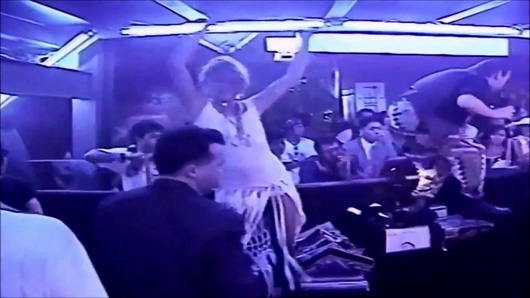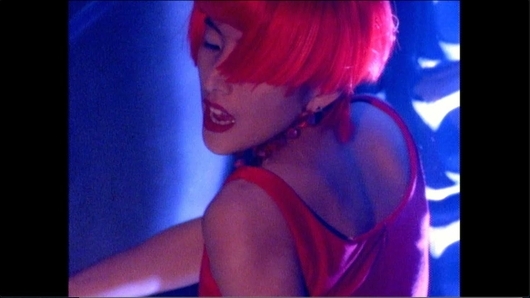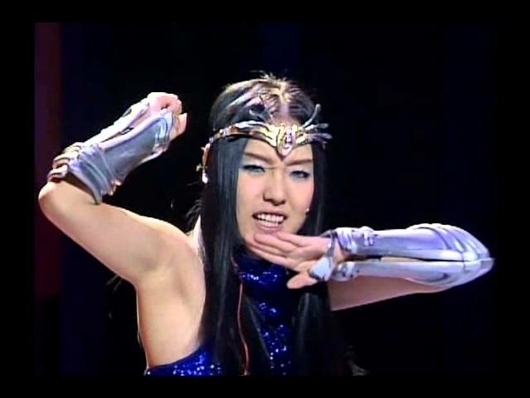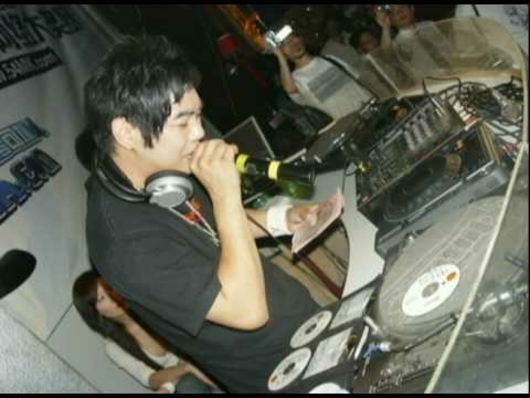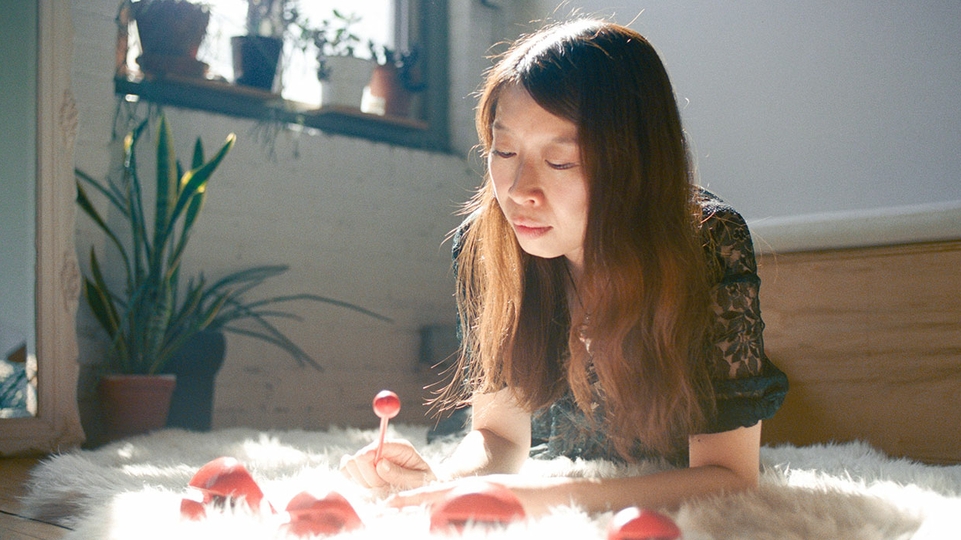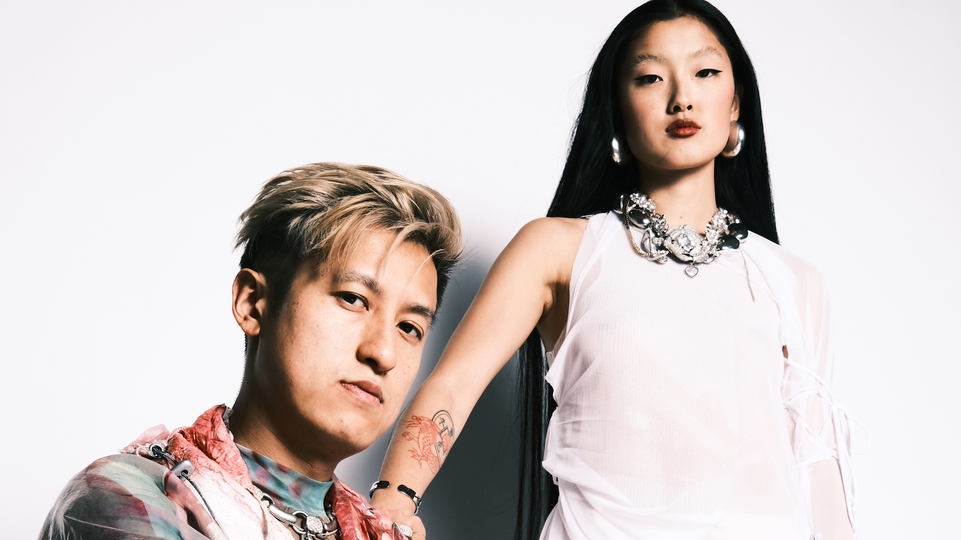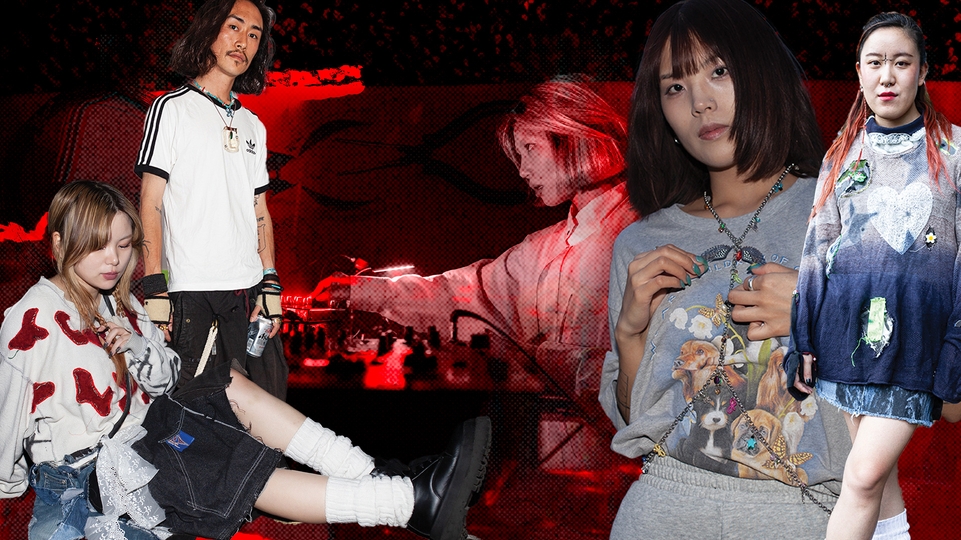
Selections: Dirty K
In this series, we invite DJs, producers and label heads to dig into their digital crates and share the contents of their collections. This week, Dirty K charts a history of ‘90s and early ‘00s East Asian rave music in ten tracks
The hyperactive tracks on Chinese producer Dirty K’s ‘Myogi 妙義’ EP serve a dual purpose. Released via Eastern Margins – a London-based label dedicated to platforming alternative and underground music from East & South-East Asia and its diaspora – its five original cuts pay homage to regional electronic music strains and their history. The intro track, ‘Live My Life’, folds sampled fragments of Korean Bokko Dance and Japanese Eurodance into a Fantazia-ready rave roller; ‘Taipei Prince’ is a propulsive club cut spliced with elements of Taiwanese electronic music from the ‘90s.
Elsewhere, in ‘Hello Hurray’ and ‘Tokyo Sturdy’, he weaves strands of hyper techno – a high-energy Japanese style from the ‘90s inspired by Belgian records – with contemporary UK breaks, hardcore and drill. The EP’s title track, which features Japanese artist T5UMUT5UMU, takes the fizzing synths of East Asian club culture and wires them round a rib-rattling amapiano beat.
“The popularity of rave culture in the 1990s sparked a global movement that also had a major impact in East Asia,” he tells DJ Mag. “European musicians took advantage of this period to explore new opportunities in East Asia, collaborating with local artists to create new music and dancing styles like hyper techno, parapara, bokko dance and taike dance. As a result, new scenes in East Asia emerged and opened up the world, with their music being highly appreciated by the local communities. However, the economic recession in the 21st century made it impossible to sustain such a market. The global EDM market, dominated by Europe and the United States, gradually caused these musics to become unknown. Therefore, I’ve reconstructed the musical cultural imprints of the East Asian music scene that once existed from countless fragments.”
‘Myogi 妙義’ is a statement of intent from an emerging artist and musical historian, who is determined to teach the world about East Asia’s rave music lineage, which made a considerable mainstream impact in its hey day. The EP is bolstered by remixes from Japanese producers WRACK and pìccolo and Taipei’s Sonia Calico, and is out now. Buy/listen to it here.
Dirty K’s Selections fulfil a similar task, charting a history of ‘90s and early ‘00s East Asian rave music in ten tracks, with text provided in both English and Simplified Chinese.
The Eastern Margins crew are in the midst of an eight-date UK and Europe tour, stopping off in Rotterdam, Berlin, London, Paris, Manchester, Copenhagen, Amsterdam, and Bologna – joined by an array of artists including Anh Phi, Lumi, Liu Lee, Mobilegirl, and many more. Get the details of that here.
Dive into Dirty K’s Selections below
“John Robinson was an active artist in Japan and East Asia during the 1990s. He worked as a DJ at the legendary club Juliana's Tokyo (ジュリアナ Tokyo) and played a key role in introducing techno and rave culture to the Asian scene. The rise of Juliana's Tokyo marked the successful transition from the disco era to the rave era in Japan. As an artist under the Japanese label Avex Trax, he has released some of the most iconic tracks of the Japanese music scene, including ‘TOKYO, GO!’
“John Robinson 是活跃在90年代日本以及东亚地区的艺人,他曾在东京传奇俱乐部 Juliana's Tokyo (ジュリアナ東京) 担任DJ,可以说他在帮助亚洲场景了解欧洲 techno音乐以及 rave文化上起着关键的作用,日本也伴随着 Juliana's Tokyo 的兴起,成功完成了从 disco 时代到 rave 时代的过渡。之后他也以艺人的身份在日本公司Avex trax旗下发表了一些列能够代表当时日本场景标志性的曲目,包括这首‘Tokyo go!之后他也以艺人的身份在日本公司Avex Trax旗下发表了一些列能够代表当时日本场景标志性的曲目,包括这首 ‘Tokyo, Go!’”
“The early 1990s Japanese dance music scene had a distinct cultural identity. A common visual motif was groups of elegantly dressed girls waving feather fans, which Japanese locals often associated with the ‘90s bubble economy. This image is often linked to the music of that time, including the MAXIMIZOR project by Japanese composer Yasuhiko Hoshino(星野靖彦. His appearance represents the localisation of techno music in Japan, It indirectly influenced the emergence of later music genres, such as hyper technoハイパーテクノ. After all, the Japanese scene during that time just simply played early techno from Belgium and Italy and referred to it as Juliana Techno (ジュリアナテクノ).”
“‘90 年代初期的日本舞曲场景有一个非常独特的文化印记,一群衣着华丽的女孩挥舞着手中的羽毛扇,当地的人们往往将这个形象与泡沫经济联系在一起,通常当这样的画面出现时,人们的脑海中一定会出现这首音乐。MAXIMIZOR 是日本作曲家 Yasuhiko Hoshino(星野靖彦)的项目,他的出现象征了Techno音乐在日本的本土化,毕竟当时的日本场景只是单纯播放那些来自比利时、意大利的早期Techno并将他们称为 Juliana Techno (ジュリアナテクノ).”
“This is an iconic hyper techno track with a strong bassline and an orchestra hit sound that immediately gets the listener's adrenaline pumping. After the birth of hyper techno in Japan, this genre of music also became popular in mainstream J-pop. At that time, both pop and rave music were dominated by Avex. TRF, a well-known Japanese music group, became the pioneers in bringing this kind of music into the public eye.”
“这是一首标志性的hyper techno音乐,强烈的bassline以及让人荷尔蒙不受控制的Orchestra hit音. hyper techno在日本诞生后,这种音乐也走进了主流J-pop的视野,毕竟当时无论是流行音乐还是Rave音乐都是由Avex公司主导,因此其旗下TRF这个知名的日本本土音乐组合就成了将这种音乐带入大众视野的先驱。”
“The anime Initial D has had a significant impact on the JDM (Japanese domestic market) culture, leading to its widespread popularity and even being considered a religion by some. Additionally, the musical group m.o.v.e, known for their popular electronic dance music in Japan during the 90s, gained international recognition with their hit song 'Rage Your Dream'. The group consisting of Motsu, Yuri, and T-Kimura incorporated almost all of popular electronic dance music from Japan in the ‘90s since their debut. They also released a compilation of remixes featuring hyper techno music, including this one.”
“因为头文字D这部动漫,使得JDM文化让全世界疯狂,这甚至成为了一种信仰,同时m.o.v.e也让日本的音乐从东亚走向了世界。为人熟知的就是这首片尾曲《Rage your dream》,这个由motsu、yuri和t-kimura组成的音乐组合从出道开始涉及到了90年代在日本所有流行的电子舞曲音乐,当然他们也发行过以hyper techno音乐为主打的remix合集,其中就包括这一首。”
“The success of Eurodance, hyper techno and other music in Japan attracted the attention of neighbouring Korea, leading to a crazy trend of techno dance music in the K-pop market at the time. One of the leading figures was Lee Jung-hyun. Her first album, 'Let's Go To My Star', combined elements of Asian techno with Eastern classical beauty and caused a huge stir in East Asia at the time, especially in China. The impact has been far-reaching. At the same time, the success of hyper techno in South Korea has also led to the emergence of a unique local dance - bokko dance, a multi-person dance that is very different from the parapara dance in Japan, where it originated.”
“Eurodance, hyper techno等音乐在日本的成功吸引了邻国韩国的注意,这导致那时的K-pop音乐市场也掀起了一阵高科技舞曲风潮。其中的代表人物就是李贞贤,她的第一张专辑Let's Go To My Star更是将亚洲techno的元素和东方的古典美融合在一起在当时的东亚掀起了巨大的狂潮,尤其是他对于中国地区的影响是非常深远的。同时hyper techno在韩国的成功,也使得当地出现了独有的一种舞蹈-Bokko dance,这是与发源地日本的舞蹈parapara完全不同的多人舞。”
“During the late 1990s and early 2000s, Taiwanese pop music reached its peak. The trend of pop dance music from Asia also spread to the region. At that time, Taiwanese record companies would frequently send the compositions of their singers to South Korea or Japan and request that professional production teams produce instrumentals. The song 'Walking On Wave' is a reinterpretation of a classic Taiwanese song from the 1980s by Yuki Hsu. However, the Korean producer found inspiration in this catchy melody and adapted it into hyper techno music.”
“台湾地区在90年代末以及千禧年初经历了他们的黄金时期,当然亚洲的流行舞曲的风潮也波及到了该地区。当时台湾的唱片公司经常会将歌手的作曲发到韩国或者日本请专业的制作团队制作伴奏。其实Walking On Wave这首歌是源自于1980年代一首台湾的经典老歌,徐懷鈺尝试想以一种全新的方式演绎它。然而似乎这优美并且朗朗上口的旋律给了当时的韩国制作人很多灵感让他大胆的将这首歌改编成了hyper techno音乐。”
“DJ Jerry played a significant role in the development of electronic dance music in Taiwan's history. It could even be argued that in the late 1990s, he was solely responsible for introducing club music from around the world to Taiwan. Having grown up in Los Angeles and being exposed to an international environment from a young age, he has a broad perspective that allows him to absorb dance music styles from around the world. This is also true for his understanding of techno music. What distinguishes him from the movements in Japan and South Korea is that DJ Jerry was one of the first to recognise electronic dance music beyond the Western world during that period. There was a prevalent Brazilian dance music genre known as 'tekno beat', which had a profound influence on DJs in Taiwan, including DJ Jerry's generation. They integrated elements of this music and transformed it into the signature sound of Taiwanese nightclubs at the time. This also gave rise to a local dance style known as ‘台客舞(Taike Dance)’.”
“DJ Jerry 在台湾电子舞曲的发展历史上起到了非常关键的作用。甚至可以说在90年代末仅仅凭借他一人就能将来自世界各地的俱乐部音乐引入台湾。因为在洛杉矶长大,从小出生在国际化背景的环境里的原因。它拥有更加广阔的视野吸收世界各地的舞曲风格,所以对于Techno音乐的理解也是如此,与日本韩国不同的地方在于,他是最先在亚洲关注西方国家以外地区的电子舞曲发展的人。当时的巴西流行一种叫做Tekno beat的舞曲风格,这深深的影响到了DJ Jerry那一代在台湾的DJ,他们吸取这种音乐的元素并将其发展成台湾夜店当时具有代表性的声音,一种本地的舞蹈“台客舞”也应运而生。”
“In the ‘90s, Hong Kong's disco music scene was thriving in comparison to Korea and Japan. However, the rave culture was slowly developing, and the mainstream market was hesitant to accept the hyper techno trends from Korea and Japan. Although hyper techno music flooded Hong Kong in the early 2000s, local producers were scarce, resulting in many Hong Kong artists simply buying the copyrights from many Korean dance music and covering it directly. However, many original works from the local talent can still be found, such as this one.”
“相比较韩国与日本来说,90年代的香港依然是Disco音乐的黄金时期,rave文化相比而言是发展缓慢的,以致于主流市场接受韩国日本带来的Hyper techno潮流冲击时,显得非常浮躁。虽然hyper techno音乐在香港千禧年初泛滥成灾,但由于缺少本土制作这类音乐的制作人,很多时候我们看到香港艺人会直接购买一些韩国舞曲的版权直接翻唱,然而,我们依然能在其中找到优秀的原创作品,就比如这首。”
“In the year 2021, I embarked upon a movement to revitalise music native to Asia, with particular fascination lying in the resounding strains of hyper techno that epitomised the dawn of the millennium in East Asia. Endowed with the support of the Eastern Margins label, and through collective efforts of local artists in Asia and the Asian communities in the UK, I successfully released my first EP, ‘Tokyo Renaissance’, an embodiment of the relevant concept. Building upon this accomplishment, I finally unveiled a more comprehensive conceptual album entitled ‘Myogi’ this year, steadfastly adhering to the vision of ushering Asian indigenous music onto the global stage.”
“本人在2021年开始发起复兴亚洲本地音乐的运动,其中这种千禧年初代表东亚地区的Hyper Techno之声是最令我着迷的部分。我得到了厂牌Eastern margins的支持,在亚洲本地艺术家与欧洲亚裔群体的共同努力下,我的第一张相关概念的EP 《Tokyo Renaissance》得以发行,在此之后我于今年终于发布了更加完整的概念专辑《Myogi》,得以将亚洲本土音乐走向世界的理念贯彻 终。”
“Hyper techno, Eurobeat, and other genres of music are nostalgic childhood memories for the generation of young people born in the 1990s in mainland China. This is because a plethora of music from Japan, Korea, Taiwan, Hong Kong, as well as related films and television productions, gained immense popularity in China. For instance, Japanese anime Initial D and Korean singer Lee Jung Hyun captivated audiences. Hence, when I launched this movement in China, I received support from many domestic musicians. Take, for example, the emerging producer Ouuuuuu and their creation of this particular piece of music.”

